#christophe edmond
Explore tagged Tumblr posts
Text
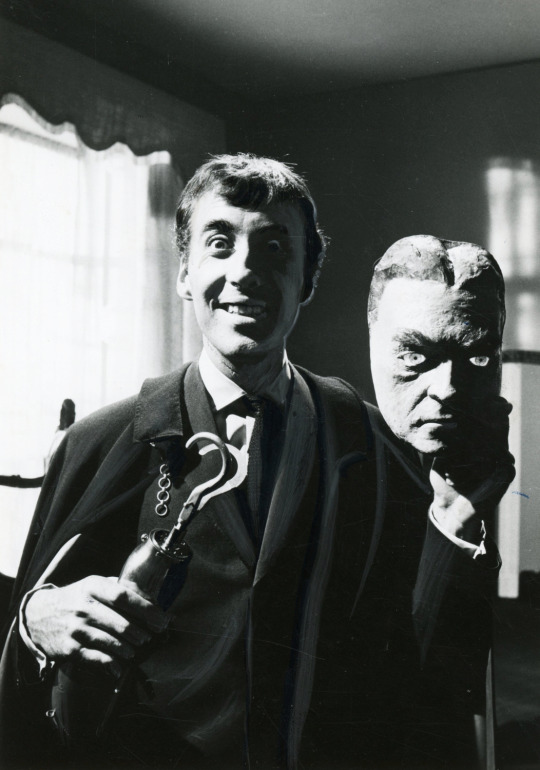
Christopher Lee in The Hands of Orlac (1960)
93 notes
·
View notes
Text

Edmond Simpson "Oh! Pedro" (Brainard-Claus-Makos) (07-24)
#mr. e gallery#digital art#digital collage#edmond simpson#joe brainard#karin jonzen-claus#christopher makos#pedro almodóvar
26 notes
·
View notes
Text
From director Edmond Gréville comes THE HANDS OF ORLAC (1960)! Starring Mel Ferrer, Christopher Lee, Lucile Saint-Simon and Dany Carrel, will this British and French co-production be the best adaptation of the Maurice Renard novel yet?
Context setting 00:00; Synopsis 17:12; Discussion 33:57; Ranking 55:28
#the hands of orlac#les mains d'orlac#maurice renard#edmond greville#donald taylor#john baines#mel ferrer#christopher lee#lucile saint-simon#dany carrel#british lion films#cfdc#claude bolling#oswald hafenrichter#desmond dickinson#podcast#horror#classic horror#SoundCloud
5 notes
·
View notes
Text
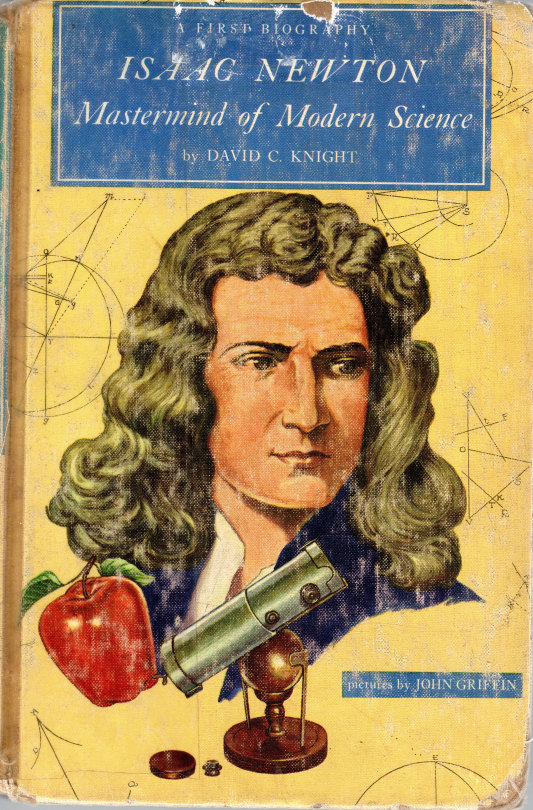

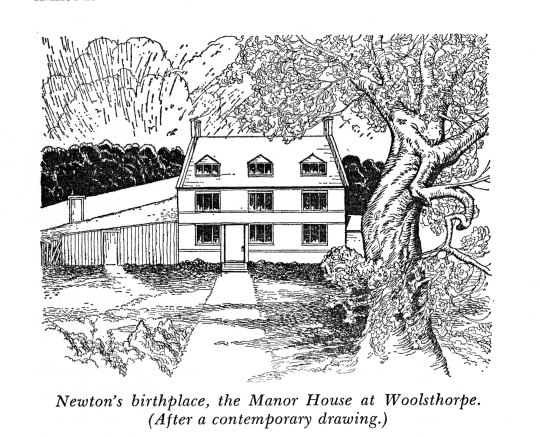
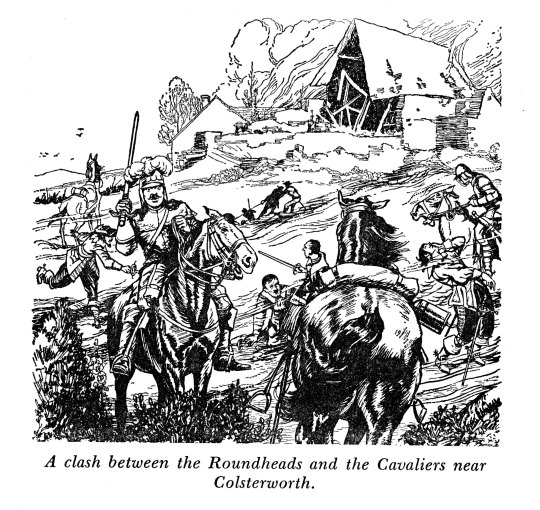
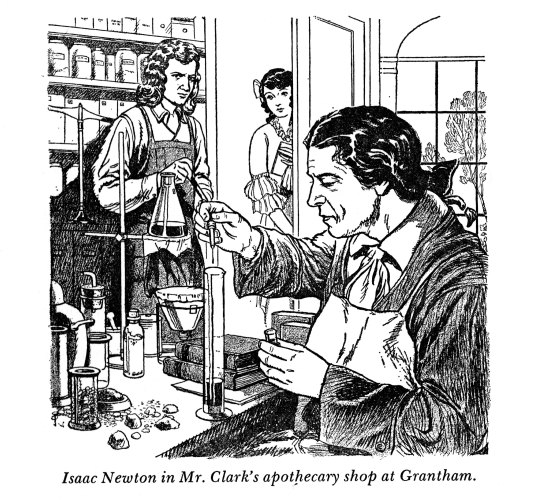


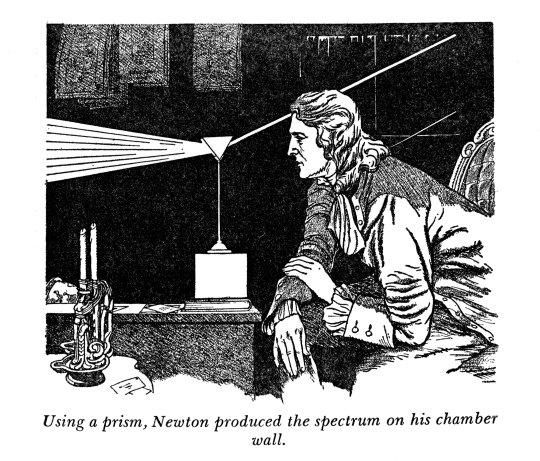

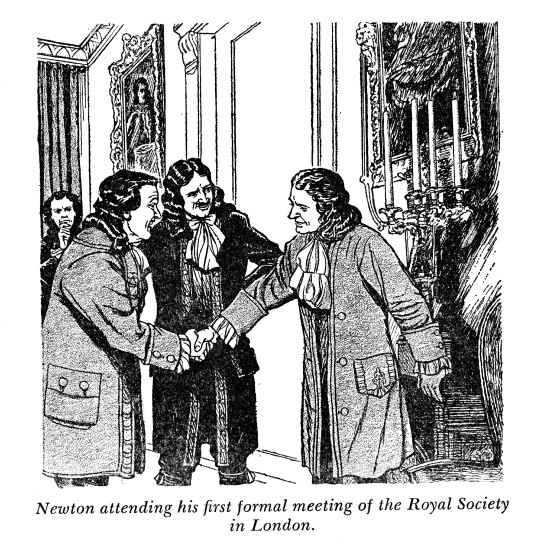
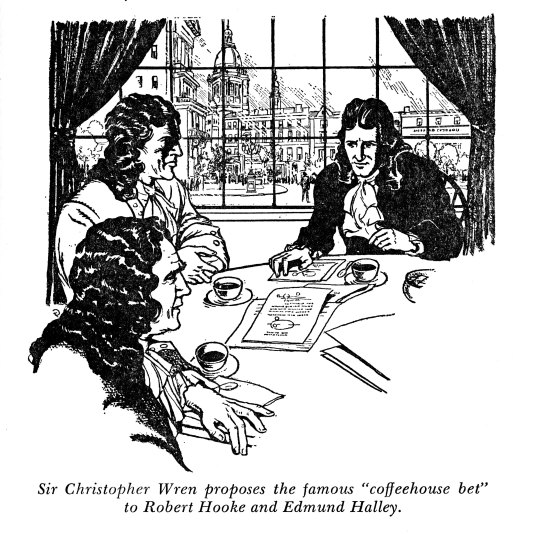

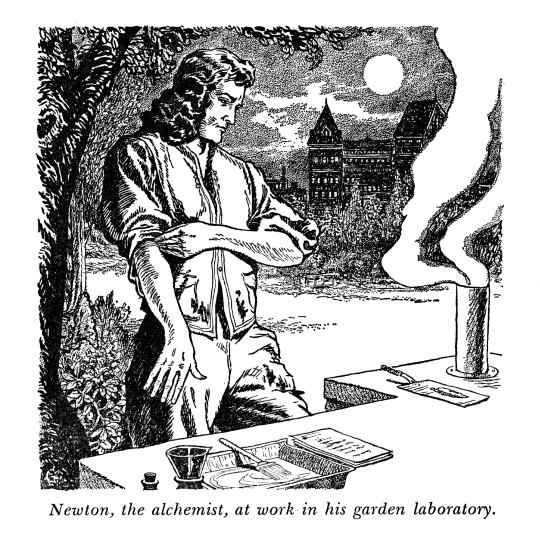



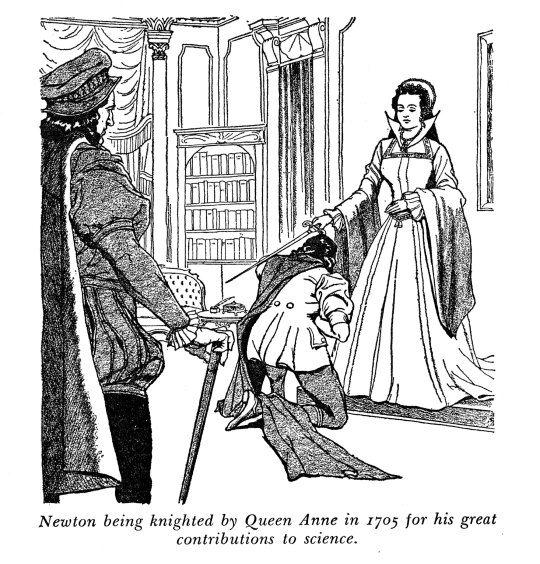

Illustrations from ISAAC NEWTON: Mastermind of Modern Science
Art by John Griffin
#isaac newton#robert hooke#isaac barrow#christopher wren#edmond halley#books#isaac newton: mastermind of modern science
8 notes
·
View notes
Photo
tag yourself i’m halley 🙏

tag yourself i’m christopher wren
#tag yourself#royal society#isaac newton#edmond halley#christopher wren#john locke#robert boyle#robert hooke#yippee#I LOVE HALLEY!!!!
791 notes
·
View notes
Text
I'm so happy so many people have found my tiny library useful! l've added a few more books for everyone!
Books Inside:
Ancient Greek Religion Jon D. Mikalson
Ancient Greek Cults Jennifer Larson
Ancient Greek Divination Sarah /les Johnston
The Odyssey Homer
The Homeric Hymns A Translation, with Introduction and Notes by Rayor Diane J
The llyad Homer translated by Stanley Lombardo
Apollodorus The Library, Volumes 1 and Il Sir James George Frazer
The Orphic Hymns Athanassakis
Creators, Conquerors, and Citizens
A History of Ancient Greece Robin Waterfield
The Oxford Handbook of Ancient Greek Religion Esther Eidinow and Julia Kindt
A Companion to Greek Religion Daniel Ogden
Theogony Hesiod
( donated by @angieisreading )
Magika Hiera Ancient Greek Magic and Religion Christopher A. Faraone, Dirk Obbink
Antigone, Oedipus the King, Electra Sophocles, H.D.F. Kitto, Edith Hall
The Bacchantes Euripides
The Oresteia Agamemnon The Libation Bearers The Eumenides Aeschylus W. B. Stanford, Robert Fagles
Euripides II Andromache, Hecuba, the Suppliant Women, Electra The Complete Greek Tragedies - Euripides II
Sophocles Oedipus Rex
Medea Euripides, Michael Collier, Georgia Machemer
Aristophanes Clouds, Women at the Thesmophoria, Frogs A Verse Translation, with Introduction and Notes Stephen Halliwell
Heracles of Euripides Euripides Michael R. Halleran
Euripides Iphigenia at Aulis Christopher Collard James Morwood
Lysistrata Aristophanes, Jeffrey Henderson
(donated by @anyrisse )
Women's Dress in the Ancient Greek World Lloyd Llewellyn-Jones
Underworld Gods in Ancient Greek Religion Ellie Mackin Roberts
Understanding Greek Religion Jennifer Larson
The Gods of Ancient Greece Jan N. Bremmer and Andrew Erskine
Restless Dead Sarah Isles Johnston
Myths of the Underworld Journey Radcliffe G. Edmonds III
Marriage to Death Rush Rehm
Greek Religion Walter Burkert
Greek Popular Religion in Greek Philosophy Jon D. Mikalson
Greek Magic J.C.B. Petropoulos
Greek and Roman Necromancy Daniel Qgden
Gods and Garments Cecile Brøns
Bride of Hades to Bride of Christ Abbe Lind Walker
Aphrodite's Tortoise Lloyd Llewellyn-Jones
Ancient Mystery Cults Walter Burkert
Ancient Greek Love Magic Christopher A. Faraone
Cult of Aphrodite Laurelei Black
Aphrodite's Priestess Laurelei Black
Festivals of Attica: An Archaeological Commentary Erika Simon
Games and sanctuaries in Ancient Greece Panos Valavanis translated by David Harty
Divine Mania Alteration of Consciousness in Ancient Greece Yulia Ustinova
Omens and oracles Divination in ancient Greece Matthew Dillon
Cults and Rites in Ancient Greece Essays on Religion and Society Michael H. Jameson, Allaire B. Stallsmith etc.
Pharnabazos, the Diviner of Hermes. Two Ostraka with Curse Letters from Olbia Andrei Lebedev
Some are pdfs and some are epubs but all of them are free for your reading enjoyment and learning!
l'll be adding more as time goes on and at the requests and suggestions of others so if you think something is missing or have a request please don't hesitate to ask me to add it!
As usual a massive thank you to Lord Hermes Dôtor Eaôn/Lord Hermes Arkhos Phêlêteôn for the idea, this library is a dedication and offering to him and adding to it is all in his name ♡
#hellenic worship#hellenic polytheism#hellenism#hellenic pagan#hermes offering#free books#hellenic community#hellenic#hellenismos#piracy is the way of hermes#Hermes Dôtor Eaôn#Hermes Arkhos Phêlêteôn#library: learning
476 notes
·
View notes
Note
im hoping to become a full time, full fledged toxic cinephile filmbro with an air of superiority and condescension. do you have a list of movies i should watch to start my journey?
ah! wrong door for toxic cinephile initiation — this is the department of the humble admirers of cinema. however, I’d be delighted to share some personal favorites if you’d like. the list may expand over time because.. well... cinema is a gift that keeps on giving (and my memory is a treacherous friend)
The Umbrellas of Cherbourg (1964, Directed by Jacques Demy), Ararat (2002, Directed by Atom Egoyan), In the Mood for Love (2000, Directed by Wong Kar-wai), Fallen Angels (1995, Directed by Wong Kar-wai), Chungking Express (1994, Directed by Wong Kar-wai), The Godfather Trilogy (1972, 1974, 1990 Directed by Francis Ford Coppola), Le Bonheur (1965, Directed by Agnès Varda), 2001: A Space Odyssey (1968, Directed by Stanley Kubrick), The Color of Pomegranates (1969, Directed by Sergei Parajanov), Mirror (1975, Directed by Andrei Tarkovsky), Indian Summer (1972, Directed by Valerio Zurlini), The Men (1972, Տղամարդիկ, Directed by Edmond Keosayan), A Piece of Sky (1980, Կտոր մը երկինք, Directed by Henrik Malyan), Mother (1991, Mayrig, Directed by Henri Verneuil), A Special Day (1977, Una giornata particolare, Directed by Ettore Scola), Grave of the Fireflies (1988, Directed by Isao Takahata), A Short Film About Love (1988, Directed by Krzysztof Kieślowski), The Double Life of Véronique (1991, La Double Vie de Véronique, Directed by Krzysztof Kieślowski), Three Colours Trilogy (1993, 1994, Directed by Krzysztof Kieślowski), Damage (1992, Directed by Louis Malle), Phantom Thread (2017, Directed by Paul Thomas Anderson), Léon: The Professional (1994, Directed by Luc Besson), Before Sunrise (1995, Directed by Richard Linklater), Perfect Blue (1997, Directed by Satoshi Kon), Notting Hill (1999, Directed by Roger Michell), Mr. Nobody (2009, Directed by Jaco Van Dormael), Spirited Away (2001, Directed by Hayao Miyazaki), Howl’s Moving Castle (2004, Directed by Hayao Miyazaki), The Lord of the Rings Trilogy (2001-2003, Directed by Peter Jackson), Pride & Prejudice (2005, Directed by Joe Wright), The Phantom of the Opera (2004, Directed by Joel Schumacher), Alexander (2004, Directed by Oliver Stone), A Ghost Story (2017, Directed by David Lowery), Lust, Caution (2007, Directed by Ang Lee), Submarine (2010, Directed by Richard Ayoade), Inception (2010, Directed by Christopher Nolan), Jane Eyre (2011, Directed by Cary Joji Fukunaga), Her (2013, Directed by Spike Jonze), Carol (2015, Directed by Todd Haynes), From the Land of the Moon (2016, Directed by Nicole Garcia), Frantz (2016, Directed by François Ozon)
287 notes
·
View notes
Text
𝟅𝟈 some of my dr's ! welcoming potential mootties, lets chat <3 | last updated: 012725 8:16pm
✰ anime
⚘ one piece , (1st) genevieve e. blue , 17 , s/o: trafalgar d. waterlaw , trope: captain/crewmate -> lovers (slow burn) , devil fruit: (kūki kūki fruit)air manipulation / (2nd) alira andilet , 18 , s/o: blackleg sanji , trope: crewmates -> lovers (slow burn) , devil fruit: (dangan dangan fruit) bullet manipulation
⟡ blue lock , satoru jena , 17 , s/o: micheal kaiser (slow burn) , family: gojo, geto (parents) + 4 siblings, team: blue locks eleven
𖦹 mha , gojo satori (yes) , 18 , s/o: bakugou katsuki , trope: strangers -> pining -> lovers (slow burn) , hero name: arachne , power: spider , family: satosugu & their 4 kids
⊰ jjk , taira kazuha , 19 , s/o: nanami kento , trope: mentor -> friends -> lovers , technique: string & invisibility manipulation , domain expansion: illusion of fear & desire , family: ren & kyoto taira (parents) kenji taira (brother)
꧞ haikyuu , ukai kananami , 15 , s/o: tsukishima kei , trope: strangers -> friends -> lovers , family: kaito & ben ukai (parents) ukai keishin (brother) , team: karasuno boys volleyball
␥ aot , geneviève ackerman , 15 , s/o: jean kirstien , trope: strangers -> enemies -> friends -> lovers , family: charlotte & oliver ackerman (parents) levi ackerman (uncle) , humanity's second strongest soldier :P , role: the savoir
⊞ atla , aoki kazuha , 16 , s/o: un-named oc , trope: strangers -> lovers , family: aki & rolan aoki (parents) kian & kano (brothers) , element: all , main: air, avatar of 3000 (?)
✰ shows
❀ obx , geneviève lambert , 17 , s/o: rafe cameron (not psycho) , trope: childhood friends -> "enemies" -> friends -> lovers , family: lyla lambert (mom) logan westwood (step dad) , role: man in the middle
⪩ twd , charlotte grimes , 21 , s/o: daryl dixon (32) , trope: strangers -> lovers , family: oliver & evie grimes (dad & mom) rick grimes (uncle turned dad) carl grimes (cousin turned brother) judith (cousin turned sister) , main weapon: dual blades
✵ bcd (/behind closed doors ; original reality) , katara brown , 18 , s/o: nakamoto arito (oc) , trope: strangers -> friends -> lovers (slow burn) , occupation: assassin in training , role: the finalist
✰ games
✶ genshin impact , (1st) princess enver le'mistral , 21 , s/o: kaedehara kazuha (?) , trope: strangers -> playful enemies -> lovers , vison: anemo , home: sky city (og) + fontaine , family: nalani & alain le'mistral (parents) navida le'mistral (aunt) , position: champion dualist / (2nd) tashita jinx - [under construction]
キ overwatch , ruben dawn , 35 , s/o: cole cassidy , trope: friends -> lovers , weapon: sword , family: mom , occupation: former blackwatch member, current ow member, frontliner
⟢ love and deepspace , (1st) anastasia blair mintz , 20 , s/o: rafayel , family: older brother (not caleb) , evol: water + resonance , occupation: deepspace hunter / (2nd) clementine , 22 , s/o: caleb , family: 'grandmother' , evol: resonance + fire , occupation: deepspace hunter
✰ other
✦ youtuber , (1st) geneviève eden silvestrè , 18 , s/o: n/a , trope: n/a family: evangeline & antonio silvestrè (parents) leo + angelina + dom (brothers & sister) / (2nd) imani eden monroe , 21 , s/o: berlin edmond , family: nilani monroe (mom) angelica & clementine (sisters)
◎ footballer , violet dupont , 21 , s/o: elisa de almeida , trope: teammates -> lovers , family: jamais dupont (dad) claude & blaise dupont (brothers) , team: psg feminines + women's french national
☆ actress , (1st) violette eden irl last name , 20 , s/o: drew starkey , trope: costars -> lovers , family: leila (mom) anastasia & june (sisters) , main roles: charlotte in obx + edith in despicable me + peyton in the game plan / (2nd) valerie eden auclair - [under construction]
𐙚 kpop , (1st) jenevieve eden levesque , 19 , s/o: christopher bang , trope: strangers -> friends -> lovers , year: 2020 , family: nilani levesque (mom) leo + angelina + dontai + alias + charlotte monroe (siblings :3) , groups: nct, nct 127, nct x / (2nd) - [under construction]
ᡣ𐭩 teen fame , genevieve eden morgan , 14 , s/o: elisa de almeida (15) , trope: friends -> lovers , family: jeffery dean morgan (dad) , main rolls - [under construction]
一 that's all ! if you have any same / similar dr's feel free to talk about them or dm me so we can !! (i desperately need to see satosugu happy if you can't tell)
❥ i didn't mention my waiting room cause that'll be another post, but it's basically a city shifting hub / giant waiting room for shifters from all different realities ! lemmie know if you wanna hear about it :)
#⋆𐙚 ₊ ° ⊹ ♡ pretty princess shifting library#reality shifting#shifting#reality shifting blog#shifting motivation#shiftblr#shifting blog#aot shifting#one piece shifting#jjk shifting#blue lock shifting#mha shifting#haikyuu shifting#atla shifting#obx shifting#twd shifting#og reality#original reality#genshin shifting#youtuber dr#footballer dr#actress dr#kpop dr#teen fame dr#my drs#overwatch shifting#overwatch dr
150 notes
·
View notes
Text
My first introduction to the play was the Wildhorn musical, there are some really catchy and well written songs and a superb cast. I fell in love with the plot and Douglas Sills' performance as Cyrano. What really fascinated me was the original text. I read it and I was completely blown away!
Since then it became one of my fav dramas, I saw the stage version with Kevin Kline - wonderful performance, and the movie with Gérard Depardieu - I think it is an absolute gem! And finally I came across THIS! (It took me a little while and a whole lotta courage to listen to it bc I loved the Wildhorn version) I was always fond of Christoper Plummer but I never thought of him as Cyrano and by God was I wrong!
He is perfect in every way for this role and the music and lyrics are also near perfection. Also kudos to the writers for including the original text and putting it in between the songs for the playlist. This adds sooooo much to the soundtrack. I think I can safely say that this version (as for the character of Cyrano) is the best one (dueling with Kevin Kline) and the music helps a great deal creating that 'magical' aura of his.
In Christopher Plummer’s memory, I’m encouraging all of my fellow Cyrano fans to go and listen to the 1973 musical starring Plummer as the title character and with Anthony Burgess himself supplying the lyrics. The whole cast recording is on YouTube and Spotify, and it’s an absolute treat–Plummer’s Cyrano is delightful, easily one of my favorite takes on the character, and anyone who doesn’t know what his real singing voice sounds like will be in for a nice surprise.
#cyrano de bergerac#christopher plummer#kevin kline#edmond rostand#musical theatre#Spotify#douglas sills
13 notes
·
View notes
Text
Queer Horror
It's pride month so here is a (NOT complete) list of horror icons real and fictional who are of the LGBTQAI+ community. Writers / directors / Actors Oscar Wilde Clive Barker Caitlin R. Kiernan William Joseph Martin James Whale (director of Frankenstein) Ernest Thesiger (Doctor Pretorius in Bride of Frankenstein) Anthony Perkins Vincent Price David Geffen (producer of Interview with the vampire movie and Beetlejuice) Jonathan Frid (Dark Shadows) Louis Edmonds (Dark Shadows) Ed Wood Elvira (Casandra Peterson) Amanda Beares (Fright Night, 1985) Merritt Butrick (Fright Night Part 2) Roddy McDowall (Hell House, Fright Night, Fright Night: Part 2, and Carmilla) _________________________ Characters Mephisto (Faust, 1922) Countess Zeleska (Dracula's Daughter) Carmilla (The Vampire Lovers, 1970 and all film adapations of Carmilla) Louis, Lestat, Daniel Malloy, Armand (Interview with the vampire movie and show and The Vampire Chronicles book series) Claudia, Madeleine, Nicolas (Interview with the vampire TV series) Jerry Dandridge, Billy Cole, Peter Vincent, Evil Ed, and possibly Amy (Fright Night, original 1985 version) Regine and Belle (Fright Night part 2, 1988) Miriam Blaylock (The Hunger movie and novel by Whitley Streiber, along with its sequels) Marius (Queen of the damned movie and novels) Glen / Glenda (Seed of Chucky) Dracula (Marvel comics, Dario Argento's Dracula, Steven Moffat's Dracula, Frank Wildhorn's Dracula The musical) Alucard, Striga, Morana, (Castlevania) The Corinthian, Hal Carter, Wanda, Judy, Donna (Foxglove), Hazel, Alexander Burgess, Paul McGuire, Cluracaun, Mazikeen, Lucifer, Loki, Desire, Johanna Constantine, John Constantine, Rachel, Chantel, Zelda, Aristaeus the Satyr, Jim / Peggy, (Neil Gaiman's The Sandman) Echo, Ruin, Heather After (From Sandman spin-off comics) April Spink and Miriam Forcible (Coraline) Angela and Sera (Marvel comics) Sam Black Crow (American Gods) EVERYONE! - Anne Rice's Vampire Chronicles EVERYONE! - Lost Girl (TV series)
Snow White (Sleeper and the Spindle by Neil Gaiman) Dorian Gray, Lord Henry Wotton, and Basil Hallward (The Picture of Dorian Gray) Captain Shaekespeare (Stardust) Loki (all incarantions) John Constantine (All versions) Aziraphale and Crowley (Good Omens) Renfield (Original Dracula novel, speculated by scholars) Mephistopheles, Faust, and Satan - Dr. Faustus by Christopher Marlowe and Faust by Goethe. Carmilla and Laura (All versions of Carmilla) Eli and Oskar (Let the Right One In) Lily and The mermaid Queen (She-Creature, 2001 version) Radu (Dark Prince: The True Story of Dracula) Lexington (Disney's Gargoyles, not canon until the comics) Dorothy and Ruby AAK Red (Once Upon a Tme) Tara and Willow (Buffy The Vampire Slayer TV series) Lorne (Angel) Ethan, Dorian Gray, Angelique, and Professor Lyle (Penny Dreadful) Thelma Bates (Hex) Joe (Midnight Texas) Skully (Scary Godmother) Mitch (ParaNorman) Henry Fitzroy (Blood Ties) Thomas Jerome Newton (The Man who fell to Earth) Any Clive Barker character NOT confirmed to be straight is presumed LGBTQAI+. There are many, many more but my fingers are starting to ache and these are the ones I could think of off the top of my head.
13 notes
·
View notes
Note
if you had to cast any actor at all OTHER than louis edmonds to play roger, who would you cast?
if i were casting him today it's really a no-brainer: jack davenport is made in a lab for smarmy, bitchy, posh, yearning performances so he'd pull it off flawlessly imho. jdav has historically done a wonderful job adding depth to his antagonists, even and especially the privileged, manipulative gentry; and his queer roles, explicit and implied, have always shined. it certainly doesn't hurt that he also has an iconic nose and he's very pretty.

as for casting someone else in '66, well. it feels like cheating to say christopher plummer, but look at him in return of the pink panther! he could do man who falls for governess again, easy.

#within the ds cast itself? have to say jerry. he could do it#thanks for the question!#➤ answered. ┊ Collinsport 4099.#millicentcollins#we could have had shirtless beach lounging roger but no.#''budget constraints''
7 notes
·
View notes
Text

The Hands of Orlac (1960) - Belgian poster
#the hands of orlac#christopher lee#mel ferrer#dany carrel#lucille saint simon#1960s movies#edmond t. greville#movie posters
55 notes
·
View notes
Text
Since in my country not just one, but two adaptations of The Count of Montecristo, I listened to an analysis of the book to refresh myself some details I'd forgotten.
"All very interesting, but why are you posting this?" you may be (rightfully) wondering.
Well, it's because I realized how much I leaned on Edmond Dantes to write Thule!Christopher in Endless Sunlight.
Does it make sense to flag "spoiler" for a book that came out 180 years ago? Just in case someone complains, SPOILER from The Count of Montecristo.
The book is a story about Edmond Dantes, a kind and optimistic young man, who becomes a cynical and cruel man. Edmond is unfairly imprisoned for years, and a part of him "dies" in the cell from where he escapes pretending to be dead.
Reminds you of something?
I wish the similarities ended here.
After escaping the prison, Edmond goes back home where he finds out what happened while he was imprisoned, and he finds a treasure that makes him hire everyone he needs to work for him and buys a noble title to be recognized by the society. Edmond will enjoy the luxury his money makes him buy, and he also uses it to plot his revenge.
Edmond will therefore present himself in front of the people who betrayed him and sent him to the cell as someone completely changed from the man they used to know, both physically and psychologically, and he will act upon his revenge plan presenting himself as an agent of the divine justice.
I swear I didn't realize how much I've taken from The Count of Montecristo, except for the escape from jail, and I was shocked to notice all the similarities between Thule!Kit and Edmond Dantes.
2 notes
·
View notes
Text

Radcliffe G. Edmonds (editor) The 'Orphic' Gold Tablets and Greek Religion: Further along the Path, Cambridge University Press 2011
"Overview
The 'Orphic' gold tablets, tiny scraps of gold foil found in graves throughout the ancient Greek world, are some of the most fascinating and baffling pieces of evidence for ancient Greek religion. This collection brings together a number of previously published and unpublished studies from scholars around the world, making accessible to a wider audience some of the new methodologies being applied to the study of these tablets. The volume also contains an updated edition of the tablet texts, reflecting the most recent discoveries and accompanied by English translations and critical apparatus. This survey of trends in the scholarship, with an up-to-date bibliography, not only provides an introduction to the serious study of the tablets, but also illuminates their place within scholarship on ancient Greek religion."
I reproduce also the review of this volume by Alexis Pinchard, CNRS, France (https://bmcr.brynmawr.edu/2011/2011.10.54/):
"Edmonds has produced a coherent volume of six previously published and five new papers about what were once called “Orphic” gold tablets, authored by both prominent and less established scholars (Alberto Bernabé, Hans Dieter Betz, Claude Calame, Thomas M. Dousa, Radcliffe G. Edmonds III, Chistopher A. Faraone, Fritz Graf, Miguel Herrero de Jáuregui, Ana I. Jiménez Cristóbal, Dirk Obbink, Christoph Riedweg, Yannis Z. Tzifopoulos). These inscribed tablets, which have been discovered since 1879 in graves throughout South Italy, Crete, and Thessaly, have no parallel in the manuscript tradition, and they are now essential sources for the knowledge of Greek religion, especially concerning personal eschatology and mystery cults. Edmonds has added in this volume a new critical edition and original translations of the Greek texts of every known gold leaf (part I), along with a synoptic description of the graves in which each tablet has been discovered. What follows is a useful history of scholarship, a list of the principal editions and a concordance with other reference editions. The whole book is endowed with an index nominum (English words), an index locorum and an exhaustive bibliography (800 references). Papers previously published in other languages are translated into English, and all papers have been updated in order to make cross-references possible as well as to correlate with the reference system of Edmonds’ new edition.
The papers faithfully reflect the broad diversity of the problems, views, and methods that the study of the gold tablets have raised. They are organized according to a polemical — but still argumentative — dialogue concerning the question of whether the tablets are really Orphic or not, and, more fundamentally, whether Orphism really was a unified religious and literary tradition or not. Orpheo-skeptics (Edmonds) coexist along with Pan-Orphists (Bernabé, Graf); advocates for an Orphic epic hieros logos as archetype for the tablets text (Riedweg) are placed side- by-side with those who emphasize the autonomous characteristics of the ritual dionysiaca (Calame). The reader is invited to draw his or her own conclusions.
Compared with the recent editions of gold tablets by F. Graf, S. I. Johnston and A. Bernabé,1 Edmonds’ work does not introduce new texts (the tablet from Lesbos, mentioned in GJ 28, is still missing). But Edmonds sometimes suggests important new readings. A positive and negative critical apparatus allows the reader to evaluate these interpretations. For example, concerning B1.11 = GJ 2 = OF 476, Edmonds proposes to read καὶ τότ’ ἔπειτα [τέλη σὺ μεθ’] ἡρώεσσιν ἀνάξει[ς] instead of the generally accepted καὶ τότ’ ἔπειτ’ ἄ[λλοισι σὺ μεθ’] ἡρώεσσιν ἀνάξει[ς], which is based on parallel formulae in Homeric epics and hymns. Actually, one may interpret the verb ἀνάξει[ς] as a future from ἀνάσσω, “to rule”, or from ανάγω, “to celebrate”. Edmonds’ reading draws an interesting correlation with D1 and D5 (GJ 26a and 28 = OF 485 and 493a) where there is an allusion to some τέλη for the initiate. But, quite inconsistently, following here the Greek text as established by Bernabé, he translates D1 as “And you will go beneath the earth, having celebrated rites just as the other blessed ones”, instead of “And below the earth there are ready for you the same prizes [ or rites] as for the other blessed ones”.2 However, it should be noted that the idea that there are rites even in the afterlife, which constitute the archetype of the terrestrial initiation ritual and the community in which the deceased become happy, is evidenced elsewhere in texts related to Greek mystery religion (e.g. Ps.-Plato, Axiochos 37d).
Only the new essays are discussed below.
In his own paper, Edmonds sharply criticizes both Bernabé and Jiménez’s assertion that each of the gold tablets is similarly Orphic and Riedweg’s reconstruction of an Orphic didactic hieros logos in which Orpheus would narrate his personal katabasis eis Aidou. Edmonds aims to show that the existence of such a unified sacred scripture, derived from an original source, is an unnecessary hypothesis because the gold leaf texts might constitute mere responses excerpted from hexametric oracles about the personal afterlife. One may admit that these oracles were thought to have been revealed by Orpheus, but Orpheus is only one of the possible voices of oracular authority, whose paradigm is to be found in the Trophonius oracle at Lebadeia, where Mnemosyne’s spring guarantees the attainment of sacred knowledge. By attacking the unity of the “Orphic” eschatological corpus, Edmonds casts doubt on Orphism as a unified religious movement: there was no Orphic community as defined by the access to a single secret hieros logos, and the gold tablets do not preserve traces of an initiatory ritual that happened during the life of the deceased. But even if Edmonds is right in refuting a unified Orphic scripture resembling the Christian Bible (but today, who wants that?), is he right to conclude that Orphism, even if it is a modern construction, has absolutely no reality? This extreme nominalism overlooks the spiritual dimension of Orphism: to connect the substantial immortality of an individual with the internalization of epic heroism and with poetic kleos, as we see in the gold leaves (see Obbink and Jáuregui below), is not a general attitude in Greek religion. It would not be absurd to label this attitude “Orphic”, even retrospectively. Moreover, the obvious diversity of the gold leaf texts might not be the proof that our grouping of the gold leaves is a mere artifact, but rather the sign of a living tradition that deals with something deeply important in human life, i.e., the consciousness of the permanent eventuality of death and the consequent hope. Orphism would thus be positively affirmed as a unity and would no longer be defined by what it is not, i.e., not a polis-sponsored religion.
Dousa’s paper is the first serious published study about the possible connection between the gold tablets and neighboring Egypt, famous for its old afterlife rituals and its funerary texts since Zuntz mentioned this hypothesis in 1971.3 Dousa wonders whether the common motifs in the B tablets and in the Egyptian Book of the Dead (a tree close to a pool of water, the critical dialogue with the guardians of the Netherworld) are due to an influence of the Egyptian religion in Greece or to a spontaneous convergence. He concludes that, if any influence took place, the Orphics at least re-organized the motifs and gave a new meaning to old patterns, as Diodorus already suggested in antiquity. Although such a pioneering approach is absolutely necessary, other important comparative perspectives for analysis of the gold tablets, which would deal with other cultures and test methodologically more refined hypotheses, are missing in this volume. To compare isolated motifs, as Dousa does, might obscure the fact that the main difference between the gold tablets and Egyptian sources is concerned not with the place or the nature of the netherworldly tree or spring, but the roles played by Memory as an immortalizing power and the nature of immortality itself, which, in Orphism, marks a divergence from terrestrial existence. In Greece (see Obbink below), initiatory Memory draws parallels with poetic memory, which establishes an imperishable glory, so that the claim to a divine origin is not a “kratophanic” assertion similar to what we see in Egypt (p. 156), but rather the realization of the eternal essence of the soul. Egyptian texts, as presented by Dousa, do not reflect on the poetic tradition and its import on the nature of the individual soul. Finally, in the case of textual similarities, the methodological binary convergence/influence is not sufficient. A common inheritance ought to be considered, especially if one attempts a comparison with Iran and India.4 A similar view and wording about immortality could be found in this direction.
According to Jáuregui, the heroic soul of the Orphic initiate derives its main features from the epic terrestrial hero, but these features are transformed in the realm of afterlife. The epic tale was changed into a soteriological program, so that the personal immortality obtained in the world beyond by remembering the divine origin itself reflects the imperishable kleos granted by the professional memory of the epic rhapsodes. This is proven by the stylistic similarities between the claim of the poetic hero to belong to a superior genos and, in the gold tablets, the claim of the deceased’s soul to its genos ouranion, i.e., its essential nature transcending every temporal incarnation. In accordance with this ontological shift, the social elitism of the Homeric epic has been changed into a spiritual elitism, but the words remain generally the same. Such an inheritance ensures the unity of the various types of Orphic gold tablets. The stylistic conservatism of the itinerant initiators may have been an excellent strategy to legitimate their radical novelty at the theological level. But does Jáuregui furnish the best interpretation of the undeniable correspondences he brings out? May we not understand both of these kinds of genos and immortality as being related through a structural difference rather by any historical process? In the larger context of the Indo-European poetic inheritance, as it is evidenced in Vedic culture, we could recognize that the heroic kleos worked from the beginning as a symbol of a more substantial immortality granted by special rituals and mental exercises.
Obbink’s article would agree with such a synchronic perspective. The recitation or the inscription of the gold tablet texts, by recapitulating Homeric formulae, constituted a ritual act that made the addressee worthy of heroic cult status. As Obbink recognizes, the soteriological content of the gold leaves should not be separated from their poetic form. The stylistic similarity between the gold leaves and Homeric epic does not simply reveal ideological appropriation obscured by literary continuity, but rather the religious function of the leaves. Obbink refers to certain odes by Pindar in which the poet compares his poetry with an immortalizing libation to the Heroes; similarly, the water of Memory in the gold tablets could be understood as an allegory of the power through which poetic speech brings life to an individual soul. Thus Orphism may be seen as a religious practice that results from reflection on the ritual value of a Pan-Hellenic poetic tradition, rather than a special tradition with new theological and stylistic features.
Faraone reminds us that the prosaic synthema “Bull, you jumped in the milk” (A group) reflects Dionysiac religion as reconstructed from other early evidence. By uttering this statement, the initiate re-enacts the sudden motion of the god from life to death and back, as it is told in the Homeric episode of Lycurgus: the foam of the sea there had a milky aspect. It deals with a personal internalization of Dionysus’ mythology, leading to an identification with Dionysus himself. Thus Dionysus would not only have been the mystic goal, but also the dynamic paradigm of every initiatic process.5 We might add that the means of salvation, necessarily at hand, does not stand outside its goal because salvation is not a matter of conquest through magic. In a way, every human being is already redeemed. As implied by another tablet family (group B, with Mnemosyne), salvation is granted by the recollection of the true nature of soul. To conclude, this book recaps 130 years of philological and theoretical research concerning the gold tablets. As a whole, it is an essential tool for the scholars interested in Classics and ancient religions. By raising difficult questions and exciting hypotheses, it brings us further along the path of Orphic studies.
Notes
1. See A. Bernabé Pajarès, Poetae epici graeci. Testimonia et fragmenta. Pars II, fas. 2, Leipzig, 2005 (here abbreviated here OF), and Fritz Graf and Sarah Iles Johnston, Ritual Texts for the Afterlife. Orpheus and the Bacchic Gold tablets, London and New York, 2007 (here abbrievated GJ).
2. As GJ do, op. cit., p. 39.
3. See Zuntz, Persephone: Three Essays on Religion and Thought in Magna Graecia, Oxford, 1971, p. 370- 371.
4. See Mendoza, J. : “Un itinerario hacio el más allá. Laminillas órficas de oro y Jaiminīya Brāhmaṇa 1.46- 50”, in Orfeo y la tradición órfica. Un reecuentro, vol. II, A. Bernabé et F. Cassadesús (ed.), Madrid, 2008, p. 933-961; see also A. Pinchard, Les langues de sagesse dans la Grèce et l’Inde anciennes, Genève, 2009, p. 534-544. But comparison with Iran doesn’t prevent to maintain some connection between Egypt and Orphism: in an unpublished talk (“The ‘Orphic’ Gold tablets: Near Eastern and Egyptian resonances”, in 2006 at the Association of the Ancient Historians Annual Meeting at Stanford University), P.S. Horky argues that Egypt, while under the rule of the Achaemenid kings, might have constituted the intermediary through which Iran indirectly influenced Orphic eschatology.
5. A. Pinchard ( op. cit., p. 461 and 469) had already proposed the same interpretation, but he is not cited here."
4 notes
·
View notes
Text
la MES d’ostermeir de lear est vraiment drôle parfois genre regardez gloucester et edmond. éric billowing white shirt mr darcy style génovèse versus christophe long-haired bagouses all black cuir montenez. act 1 to 3 is just a very long « my emo son did nothing wrong »
2 notes
·
View notes
Text
Birthdays 5.20
Beer Birthdays
John Adam Lemp (1798)
Louis de Luze Simonds (1852)
Eduard Buchner (1860)
Louis Hemrich (1872)
Lord "Benjie" Iveagh (1937)
Judy Ashworth (1942)
Oliver Hughes (1959)
David Walker (1964)
Five Favorite Birthdays
Emile Berliner; inventor of flat phonograph record (1851)
Israel Kamakawiwo'ole; Hawaiian singer (1959)
John Stuart Mill; English philosopher (1806)
Timothy Olyphant; actor (1968)
James Stewart; actor (1908)
Famous Birthdays
Danny Aiello; actor (1933)
Emile Berliner; German/US inventor (1851)
Cher; pop singer, writer (1946)
Joe Cocker; rock singer (1944)
Christopher Columbus; explorer (1451)
Mindy Cohn; actor (1966)
William Congreve; English inventor (1772)
Francis Cotes; English artist (1726)
Henri-Edmond Cross; French artist (1856)
Moshe Dayan; Israeli general (1915)
Honore de Balzac; French writer (1799)
Aleksandr Deyneka; Russian artist (1899)
Alfred Domett; English/NZ poet (1811)
Patrick Ewing Jr.; basketball player (1984)
William Fargo; banker (1818)
Gardner Fox; author (1911)
George Gobel; comedian (1919)
Tony Goldwyn; actor (1960)
John M. Harlan; US Supreme Court justice (1899)
William Hewlett; H-P Founder (1913)
Nick Heywood; UK pop singer, guitarist (1961)
Guy Hoffman; rock musician (1954)
Levinus Lemnius; Dutch writer (1505)
Shorty Long; musician (1940)
Dolley Madison; first lady of James Madison (1768)
Hector Malot; French author (1830)
Hans Meerwein; German chemist (1879)
R.J. Mitchell; English engineer (1895)
Bobby Murcer; baseball player (1946)
Sumitranandan Pant; Indian poet (1900)
Bronson Pinchot; actor (1959)
Busta Rhymes; rapper (1972)
Michele Roberts; UK author (1949)
Louis Smith; jazz trumpeter (1931)
Tony Stewart; automobile racer (1971)
Jewel Styles; pornstar (1988)
Dave Thomas; Canadian comedian, actor (1949)
William Thornton; architect (1759)
David Wells; baseball player (1963)
Jane Wiedlin; pop singer (1958)
Anthony Zerbe; actor (1936)
3 notes
·
View notes